As for many racers, sim-racing is above all a passion that allows us to escape for a while from our monotonous daily lives and immerse ourselves in frantic racing on the world’s most legendary circuits. It’s not just a discipline to pass the time on Sundays by setting good lap times, no. It’s more than that. You know it, and sim racers the world over know it.
Each driver is unique, with his or her own preferences in terms of sim-racing peripherals. Personally, I love the Fanatec ecosystem for many years. The German manufacturer has incredible experience in the discipline, and offers a host of sim-racing peripherals that are high-performance, beautiful and, above all, ultra-realistic. It’s not for nothing that Fanatec has been chosen to equip the steering wheels of the official BMW GT cars this year.
Of course, each setup consists of more or less the same peripherals. You have a base, a steering wheel (depending on the discipline you like best) and a crankset. However, some racers want to have more advanced setups, with handbrakes, shifters, chassis and even VR headsets.
It’s true that virtual reality brings its share of additional immersion to sim-racing, provided you choose the right VR headset, because there are a lot of them out there, and not all of them are the same. Some are good for sim-racing, others not so much. In what follows, I’m going to present you with a list of the best VR headsets that I find perfect for sim-racing and all its disciplines. I’ll tell you about their strengths and weaknesses, and how to choose one.
The Oculus Rift S

Advantages :
- 115° wide field of vision
- Comfortable to wear for long sim-racing sessions
- Good display resolution of 1280×1440 pixels
- Very good value for money
Disadvantages :
- 80 Hz refresh rate
- Motion tracking not super accurate
I’ll start with the Oculus Rift Sa quality VR headset and, in my opinion, the least expensive on this list. If you’re looking for a VR headset that does everything right, without necessarily being perfect in a few specific areas, the Oculus Rift S is the ideal choice.
The first positive point of this helmet compared to sim-racing is its excellent 115° field of vision. To put it simply: your eyes will see more, without you having to turn your head, which is less stressful for your body as you’ll be making less effort, and more natural too, I think. Coupled with this wide field of vision, the helmet’s good resolution means that the average eye will be perfectly at ease with the environment. Admittedly, some people might find the 1280×1440 pixels a little limiting, but believe me, between this helmet and another with many more pixels, the difference is less glaring to the untrained eye.
Another good thing about this VR headset is how comfortable it is to wear. Ah, that’s excellent. Being relatively light, after a while you’ll forget you’re wearing a VR headset on your head. Its design is such that it adapts to all heads, whatever their shape, while offering a high level of comfort. What’s more, the Oculus Rift S comes with integrated headphones, which further enhances comfort by eliminating the need to wear a headset for sound, and the integrated headphones are not bad at all.
Let’s move on to the weak points of the Oculus Rift S. First, the refresh rate is 80 Hz. Well, that’s better than 60 Hz, but it’s borderline, and could induce motion sickness in some riders. I would have preferred 90 Hz, but compromises had to be made, and it’s the refresh rate that took the hit.
Another negative point is the motion tracking, which really isn’t accurate. The main suspect here is the lack of external motion sensors. The Oculus Rift S integrates cameras to determine the wearer’s movements, which is great on paper, but not so good in reality. For sim-racing, this doesn’t pose too many problems. But when it comes to playing other games, the Oculus Rift S quickly shows its limitations, especially when it comes to motion tracking.
All in all, this VR headset will delight beginner or even amateur sim-racers on a budget. The price of the Oculus Rift S varies between €350 and €450 depending on the retailer, and I think it’s well worth it.
The Samsung HMD ODYSSEY+

Advantages :
- 90 Hz refresh rate
- 1440×1600 resolution
- 110° field of view
- Wired connection only
Disadvantages :
- Motion tracking not very accurate
Samsung is a brand that needs no further introduction, as it is present on every market. Smartphones, tablets, TVs, computers, even VR headsets. Quality is always the watchword at Samsung, and this is evident in all the brand’s products, such as the HMD ODYSSEY+.
This VR headset takes up what Samsung does best: displays. Indeed, we find a display with a resolution of 1440×1600 pixels, with a refresh rate of 90HZ and a 110° field of view. Right off the bat, these are superb stats, worthy of a premium monitor, and just what you need for sim-racing VR. The 90 Hz refresh rate is ideal for long sim-racing sessions, such as endurance races, as you won’t have to worry about the motion sickness that can be experienced on headsets with lower refresh rates, such as the Oculus Rift S.
In terms of comfort, Samsung’s headset is quite comfortable, even if its size tends towards the bulky side. What’s more, you’ve got an integrated AKG sound system, so you can take full advantage of sim-racing immersion. Another good thing about the HMD ODYSSEY+ is that it uses a totally wired system. Here, you won’t have a wireless connection that inevitably induces lag, and that’s the last thing you want in VR, even if many people would prefer the opposite. Personally, I’m all for a wired VR setup.
Now to the weak point: movement tracking. Featuring internal cameras, these are used to detect and determine the movements of the wearer or runner, in order to transcribe them into the game. Like the Oculus Rift S, on paper it looks good, but in reality it’s not very accurate. If you move smoothly, without being abrupt, the headset will be able to follow your movements within its field of vision. If you’re quick on your feet, well, the HMD ODYSSEY+ will be out of line. In fact, it’s the only weak point I can find in this helmet.
As far as the price of the HMD ODYSSEY+ is concerned, Samsung’s headset trades for a price hovering around €450, which is frankly not bad. The only snag is that you’ll need to find one on the new market, given that this little gem was released in 2018. If you can find a new one, it’s an excellent choice for sim-racing.
HTC VIVE PRO
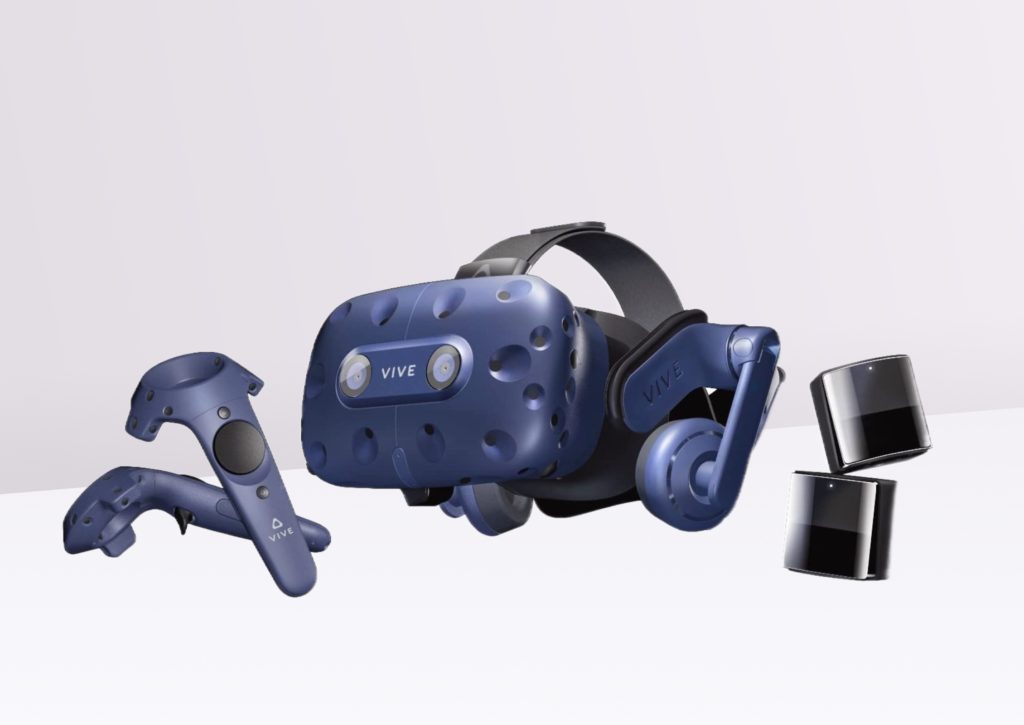
Advantages :
- Definition of 1440×1600 pixels
- 90 Hz refresh rate
- High-precision motion tracking thanks to external sensors
Disadvantages :
- Premium prices
Long considered one of the most innovative brands in the smartphone world, HTC has, much to the dismay of purists, withdrawn from the high-end handset market, releasing the occasional mid-range smartphone. However, the DNA of innovation has not died out at the Taiwanese manufacturer, and HTC has focused on VR, notably with its Vive Pro.
So, the Vive Pro is a premium VR headset, and I’ll say it right away so that its price doesn’t surprise you any further down the line. Its design is rather futuristic, reminiscent of the robot in the film “Chappie”. Color-wise, you’ve got blue and gray, but that’s not a point that interests many people, given that you’re going to be wearing the headset and not doing a fashion show with it.
The Vive Pro has a resolution of 1440×1600 pixels for each screen, leaving us with a combined resolution of 2880×1600 and a refresh rate of 90 Hz. Frankly, that’s just what you need for a good VR experience. What’s more, the Vive Pro ‘s field of view is 110°, which is more than enough for sim-racing, leaving you highly attentive to your surroundings without moving your head.
When it comes to comfort, the Vive Pro is a good student, with a design that’s made to fit everyone. Sound is integrated into the Vive Pro, leaving you even more comfortable, since you don’t have to wear headphones or earphones specifically for this purpose. And that’s a big plus in my book.
Let’s move on to motion tracking. Unlike the other VR headsets I’ve just introduced, the Vive Pro uses an external motion tracking system, with sensor stations that you position at strategic points in your environment. On the one hand, this system is ultra-precise in determining the movements you make. On the other hand, it’s not really useful for sim-racing, and it adds another level of complexity, since not only do you have to find the right room for VR, place the stations in the right places and, above all, use that room only for VR, on top of the bill that goes up with it.
Speaking of price, the Vive Pro is sold in several kits to suit your budget. The “basic” kit, with just the headset, is priced at around €600. If you’re looking for the “full kit”, i.e. the VR headset, controllers and 2 sensor stations, the bill will quickly rise to around €1,000, depending on the retailer. Honestly, that’s expensive. But on the other hand, this VR headset is excellent, and has been proving its worth for a while. So…
HP REVERB
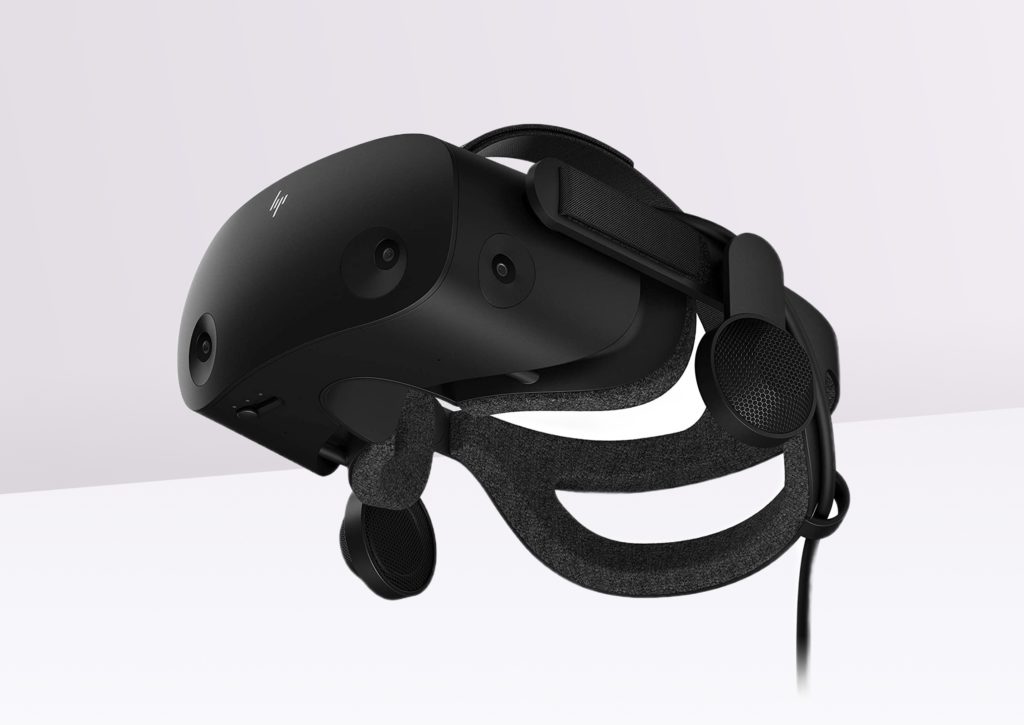
Advantages :
- Resolution of 2160×2160 pixels
- 90 Hz refresh rate
- 114° field of view
- Lightweight
Disadvantages :
- Very premium prices
- Sometimes capricious movement tracking
I don’t need to tell you the history of the HP brand, since you’ve almost certainly used one of its products. Even if the American manufacturer is essentially devoted to everything to do with computers, it has to be said that thinking outside the box is sometimes beneficial.
So, the HP Reverb is an excellent VR headset, especially on the technical side. It boasts a resolution of 2160×2160 pixels per eye, a refresh rate of 90 Hz and a 114° field of view. So far, the HP Reverb exceeds, in terms of specs, all the VR headsets we’ve seen on this list, and that’s the strength of this product. Thanks to its high refresh rate, you can be sure you won’t experience motion sickness during your VR sim-racing sessions. What’s more, the 114° field of view ensures limited head movement, allowing you to concentrate more on the road ahead.
Let’s talk about the design. In short, it’s sober. The helmet is minimalist, with just two cameras on the front and the new HP logo. The helmet’s foam-covered structure makes it comfortable to wear for long periods, and you have a headband above it that adds stability for the wearer.
As for sound, the HP Reverb has its own built-in, adjustable sound system. So you don’t have to worry about headphones or other peripherals. However, I must warn you that the HP Reverb is not wireless, so you’ll have to get used to having wires when you’re out shopping. But that’s not a problem, since all the cabling comes out of the back of the headphones, and it also prevents lag.
The HP Reverb ‘s motion tracking is handled by two cameras on the front of the headset. This has the advantage of eliminating motion detection stations, like those used for the HTC Vive pro, and the disadvantage of less precise movements. But honestly, you won’t feel that many differences in sim-racing. So it’s a plus as far as I’m concerned.
You’re probably thinking that such a technical specification, such a beautiful design and such a famous name all come at a price. Well, yes, the HP Reverb is a rather expensive VR headset, costing between €740 and almost €1600 depending on the kit you choose. That’s really expensive, very expensive indeed.
Which one to choose?
- Budget. The first thing to do is to determine a budget that must not be exceeded. This budget is set by taking into account a number of points, such as the degree of immersion you want, the configuration you currently have, the time you want to invest in sim-racing, and so on. A good VR headset costs a minimum of €350. Anything less and you’re likely to find a lot of compromises.
- Comfort. Not all VR headsets are the same, especially when it comes to comfort. Some wear very well for a long time, others don’t. You may want to choose an inexpensive headset that’s not very comfortable if you plan to do short sim-racing sessions. But for anything longer, it’s best to choose a comfortable helmet.
- Refresh rate and resolution. If you want a minimum of visual comfort without motion sickness, you should look for a VR headset with a refresh rate of at least 80 Hz. As for resolution, aim for those with at least 1280×1400 pixels for fine detail and less motion sickness.
- Compatibility. Not all VR headsets are compatible with all platforms available on the market. So it’s best to choose a headset based on your platform, to get the most out of sim-racing and VR.
- Sound. Most new VR headsets are equipped with sonos systems that allow you to play fully without the need for headphones or other sound devices. In reality, this isn’t necessary, but it’s a big plus as far as I’m concerned.

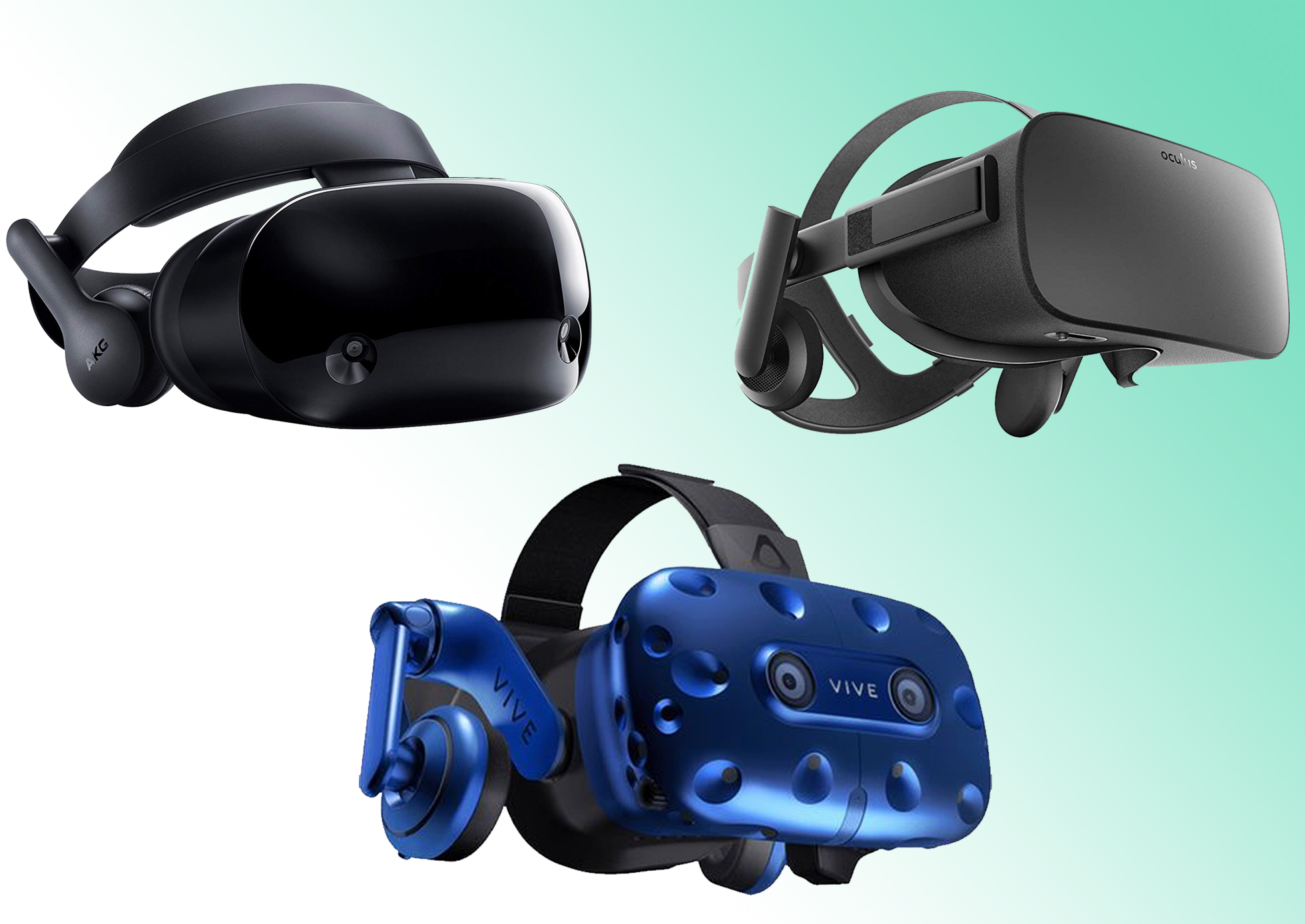
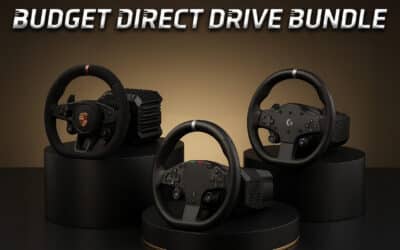
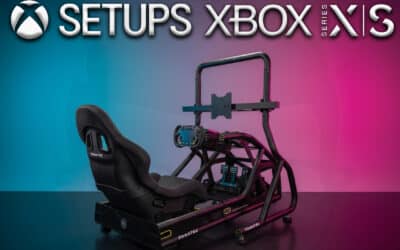



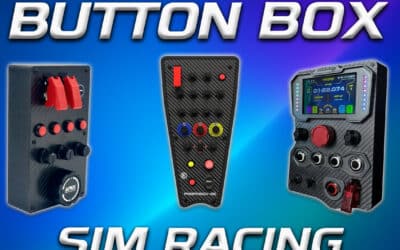
0 Comments